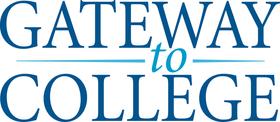Dual Enrollment: Earning College Credit in High School
The opportunity for high school students to earn college credit through a dual enrollment program is more vigorous than ever in 2025. At its core, dual enrollment allows students to take college-level coursework while still enrolled in high school, thereby accelerating their postsecondary journey, reducing tuition costs and clarifying career pathways. This article updates the discussion around dual enrollment with the latest data, policy shifts, tuition trends, demographic considerations and practical insights for parents, students and educators.
What is Dual Enrollment?
Dual enrollment refers to arrangements between high schools and colleges—often community colleges—whereby eligible high school students take for-credit college courses. These may occur on high school campuses, college campuses or online. Students earn both high school and college credit simultaneously. The arrangement is distinct, though sometimes overlapping, with advanced placement (AP) and International Baccalaureate (IB) classes, in that the credit is granted by a postsecondary institution rather than through standardized exams alone.
Why It Matters
For students and families, dual enrollment offers several concrete advantages:
Head start on college: By earning credit early, students may shorten time to degree, save money and reduce debt.
College readiness: Exposure to college-level work builds confidence and clarity regarding academic expectations. Research shows students who are dual enrolled are more likely to enroll in college and complete credentials.
Cost savings: Many states and districts subsidize or waive tuition for dual enrollment, making it significantly less expensive than traditional college coursework.
Career pathway alignment: Dual enrollment often connects with technical or workforce tracks, allowing students to explore and certify in high-demand fields.
Recent Participation and Trend Data (2025)
Participation in dual enrollment has grown markedly in recent years:
In the 2022-23 academic year, nearly 2.5 million high school students across the U.S. took at least one dual enrollment course. Community College Research Center+2Hechinger Report+2
Roughly 73.5 % of those (around 1.8 million) were enrolled in public community colleges.
At public community colleges, dual-enrolled high schoolers comprised about 20 % of total enrollment in 2022-23.
In some states the growth has been especially sharp. For example, in Texas, dual credit enrollment in public community colleges increased from 183,726 in Fall 2020 to 249,328 in Fall 2024 (a 36 % growth).
According to the National Center for Education Statistics (NCES), 78 % of U.S. public schools offering grades 9-12 reported that they provide at least one dual enrollment course option.
These figures reflect a strong acceleration of the dual enrollment movement and indicate growing institutional adoption and infrastructure.
Policy and Funding Updates for 2025
As dual enrollment becomes more prominent, state and federal policy are evolving to support, regulate and expand the field.
The U.S. Department of Education has supported initiatives such as the “IDEAS” Hub model to strengthen dual enrollment infrastructure, particularly in underserved communities.
Many states are updating regulatory frameworks. For instance, the New York State Education Department proposed statewide regulations in 2025 requiring partnership agreements between P-12 schools and higher education institutions, and stricter definitions of course equivalency.
Funding models are shifting toward equity. A 2025 update noted that although policy may be silent on tuition payment responsibility, states like New Jersey have created competitive dual‐enrollment partnership grants to cover student tuition and other expenses. College in High School Alliance
States such as Georgia updated regulation documents for the 2025-26 dual enrollment award year covering tuition, mandatory fees and books eligibility.
For school districts and families, this means dual enrollment programs are becoming more standardized, better supported and more closely tied to equity and accountability goals.
Tuition, Cost and Logistics
One of the most appealing aspects of dual enrollment is cost savings—but the actual cost and logistics vary significantly by state, district and institution.
Many community colleges partner with high schools to waive or heavily discount tuition for dual enrollment students.
Some states require high schools or districts to partner with colleges and submit annual articulation agreements; for example Florida’s dual enrollment articulation agreement process requires submission by August 1 each year.
Families should check whether costs for textbooks, fees or transportation are covered, and whether the college credit will transfer to four-year institutions.
Because college courses operate on a different calendar and grading basis, students must balance workload, scheduling and possibly travel.
Equity, Access and Demographic Patterns
Despite growth, dual enrollment still presents equity and access gaps:
Nationally, White students are over-represented in dual enrollment relative to their share of high school enrollment; Black and Hispanic students remain under-represented.
In Hawai‘i, for example, participation in dual credit among grades 9-12 rose from 5.6 % in 2015-16 to 10.1 % in 2022-23—but economically disadvantaged students remain less likely to participate.
Geographic disparities also persist: Students in rural districts may face fewer opportunities or weaker pathways, even as dual enrollment expands.
Educators and policymakers emphasize that simply offering dual enrollment is not enough—students must receive academic advising, logistical support and culturally responsive outreach to fully benefit.
Real-World Example: Scaling Up in Practice
Consider the case of Houston Independent School District (HISD) and its partnership with the University of Texas OnRamps dual enrollment program: During the 2023-24 academic year, enrollment jumped from around 941 to over 3,500 high school students in OnRamps courses; roughly half of those claimed college credit. The district covered tuition and instructional materials. Houston Chronicle This expansion demonstrates what it takes to scale dual enrollment—district commitment, funding, partnerships, and a shift in school culture to prioritise advanced coursework.
Best Practices for Families and Educators
Here are guidelines for navigating dual enrollment effectively:
Start conversations early: Students and families should explore dual enrollment options as early as grade 9 or 10.
Clarify transferability: Ensure the college credit will transfer to intended four-year institutions or count toward a major.
Check cost and logistics: Confirm if the district covers tuition, fees, books and whether courses occur at the high school or elsewhere.
Ensure support structures: Students undertaking college-level work require time management, advising and academic support.
Promote equity and inclusion: Schools must actively recruit under-represented students and provide accessible pathways.
Coordinate with counselors: High school counselors and college partners should align schedules, prerequisites and graduation requirements.
Review state policy annually: Policies affecting eligibility, funding or articulation may change—families and educators should stay informed.
The Outlook for 2025 and Beyond
As we head further into 2025 and beyond, dual enrollment appears poised for continued growth. The higher education landscape is facing enrollment headwinds, yet dual enrollment remains a bright spot. Institutions see it as a pipeline strategy, and high schools view it as a key lever for college and career readiness. With nearly 2.5 million students participating and policy frameworks maturing, we are at an inflection point. However, scaling high-quality programs while closing equity gaps remains the major challenge ahead, as noted in recent analyses.
Why This Matters for Boarding and Private School Contexts
For readers of sites such as BoardingSchoolReview.com and PrivateSchoolReview.com, dual enrollment offers a strategic benefit:
Private and boarding schools can partner with nearby colleges to enhance their advanced coursework portfolio, supplementing AP/IB options.
Students at these schools may gain even more value when college credit is integrated thoughtfully into their academic plan.
Institutions should evaluate how dual enrollment fits into their mission, advising structure and long-term student outcomes.
Conclusion
Dual enrollment has matured from a niche offering into a mainstream strategy for accelerating college readiness, reducing cost and enhancing student choice. In 2025 the data confirm that millions of high school students are earning college credit, policies are becoming more comprehensive and programs are expanding in scale. Yet the benefits are not evenly distributed and schools, districts and families must actively engage to maximise access and quality. With thoughtful planning and strong partnerships, dual enrollment can be a meaningful plug-in to a student’s path toward postsecondary success.
As you evaluate dual enrollment options for your school, student or family, consider the alignment of coursework, credit transfer, cost structure and student supports. The payoff can be significant—both academically and financially.















